What is multiple sclerosis (MS), what causes it, why do some people suffer from it, and how can we treat it? This week we hear about a drug that can halt the disease in its tracks for some patients, and how scientists screening chemicals that trigger the brain to make new myelin have stumbled on a therapy that might reverse the symptoms for some sufferers. Plus, in the news, why the US and India are launching probes to Mars within weeks of each other, where the meteor which exploded over Russia in February 2013 came from, how Prozac makes the brain more plastic, and the stem cells which mothers give their babies in breast milk.
In this episode

01:21 - Missions to Mars!
Missions to Mars!
On the 5th November, Bonfire Night, there were a lot of rockets going bang in the sky. Over India, however, there was one rocket that didn't explode. Instead it's making it's way to Mars!
In two weeks' time a second space craft will be leaving Earth, this time from America, but again heading to Mars. So why is there so much traffic to this little red planet right now?
Earth and Mars orbit the sun on different trajectories. Sometimes they are up to 200 million km apart, and others a mere 75 million km apart. America and India are sending rockets up during the current launch window to take advantage of the relatively smaller distance between the planets.
But what will the space craft do once there? They will act as sniffer dogs, probing the atmosphere in the orbit to try to find out what happened around 4 billion years ago to cause Mar's atmosphere to drastically change and decrease in pressure.
We know that Mars used to have an atmosphere much more similar to ours here on Earth, as on Mar's surface a dried out river beds indicating water used to be in liquid form there about 4 billion years ago. These craft are sniffing the atmosphere to try to find out what happened to cause such drastic climate change. These findings might be relevant to Earth, as we are currently facing some significant climate change threats.
Both craft are also taking photography equipment with them. They should reach Mars next September (2014) so we should receive some lovely up close images of the little red planet, and the view of Earth from there, then.
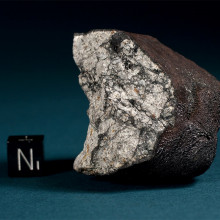
04:31 - Meteor post-mortem
Meteor post-mortem
Using videos posted on the Internet, a Czech team have reconstructed and traced the origins of the asteroid fragment that devastated a Russian city earlier this year...
The Chelyabinsk meteor, as it is now known in honour of the city where it struck, broke up in the air on February 15th 2013, unleashing a shockwave packing energy equivalent to half a million tonnes of TNT.
Thousands of windows were smashed and people injured as the airblast ripped through the metropolis.
An 8 metre hole which appeared in the ice of lake Chebarkul 70km to the west is thought to indicate the final watery resting place of what remained of the object that caused the blast.
Now, writing in Nature, Lukas Shrbeny and his colleagues at the Academy of Sciences of the Czech Republic have used 15 publically-available videos of the passing impactor to estimate its size and proportions, plot its trajectory and speculate about its origins.
Calibrating the video sequences by using the positions of identifiable stars, and using the sonic booms documented on the video soundtracks to chart the break-up of the object, the Czech team's results suggest that a house-sized object of roughly 10 million tonnes and travelling at over 19 kilometres per second slammed into Earth's atmosphere and began to fragment.
At between 30-40 kilometres up it broken into 20 boulders about 10,000 tonnes apiece before severe disintegration occurred at an altitude of 22 kilometres leaving one dominant 500 tonne object that ultimately plopped into Lake Chebarkul. Intriguingly, the results suggest that, before it hit the Earth, the object would have shared a close orbit with a known NEO (near-Earth object), an asteroid called 86039.
A collision with, they speculate, another object dislodged a chunk of 86039, dispatching it on an Earth-bound course.
Already weakened and fractured by this earlier event, the combined pressures of smashing into the atmosphere and the heating from friction with the air, caused the object to disintegrate explosively.

07:41 - Quick Fire Science: Megafauna
Quick Fire Science: Megafauna
This week archaeologists in Queensland, Australia, found part of a fossil from an ancient platypus that was a metre long. Archaeologists have already found the remains of many giant ancestors of modern creatures, so here's two modern day giant animals - Simon Bishop and Matt Burnett - with this week's quick fire science looking at why animals grew so big in the past:
- Giant animals are called megafauna. The definition of megafauna can include kangaroos and even humans, but historically much larger, stranger beasts have roamed the land.
- When the dinosaurs became extinct, previously small animals thrived. Mammals, birds and even fish grew massively to fill the niche.
- Perhaps the best known example of extinct megafauna is the woolly mammoth. These huge elephant-like creatures roamed across North America, Europe and Asia during the last Ice Age, using fur to keep warm.
- Australia in particular has uncovered some impressive mega fauna including the Diprotodon - a wombat the size of a rhino, and Varanus priscus, a monitor lizard that grew up to 7 metres long!
- The decline of megafauna around the world often coincided with the arrival of humans. There were once 4 ton, 6m-long sloths, but they met their end when humans colonised the Americas.
- It is suggested that we hunted many large animals to extinction, but scientists have also suggested the end of the ice age or changes in climate may have caused their disappearance.
- Humans used to be bigger too. Over the past 40,000 years, human body and brain size has decreased because of changes in diet and lifestyle, as we swapped hunting giant beasts to farming tamer, smaller ones.
- But present day megafauna do exist. The blue whale is the largest animal to have ever lived, and there are between 10,000 and 25,000 alive today.
- At 30m in length, with a heart the size of a car and requiring 7 tons of food a day, the blue whale is a true leviathan. The second largest known animal to have lived - the dinosaur Argentinosaurus - was only half the weight of a blue whale.
10:15 - Breast milk stem cells
Breast milk stem cells
with Foteini Hassiotou, University of Western Australia
There’s more than just “milk” present in breast milk - it turns out that a hungry baby is actually gulping down millions of its mother's stem cells too. This week, University of Western Australia scientist Foteini Hassiotou has published work in the journal PloS One showing how the levels of these cells vary in breast milk. But do they survive in the baby, and what are they doing in milk in the first place? She spoke to Chris Smith...
Foteini - So we’ve been examining stem cells in human milk. We find them in all the milk samples that we’ve analysed so far, which is hundreds and hundreds of them. What we think is happening is that some of these stem cells come from the mother’s breast tissue and some come from the mother’s blood. So the question is, how they get into the milk, and what they do as soon as they are ingested by the baby.
Chris - Are they viable? In other words, are they living cells, they’re not just dead cells that have fallen out of the breast in the course of making the milk?
Foteini - They are very alive, and they are able to survive for quite a while in the milk. When we get freshly expressed breast milk from the mother and we isolate the cells and look at them under the microscope, in most of the cases you find a cell viability of more than 90%, so more than 90% of these cells are alive.
Chris - Do you think they have a physiological role, in other words do they do something for the developing baby?
Foteini - I do think so. And for something to be doing something it needs to have been there for quite a while, so these cells have been there in evolutionary terms for many, many, many millions of years.
Chris - How do you know that?
Foteini - The very early mammals, they also have cells in their milk. Every mammal has cells in their milk, so I think that is proof that they’ve been there for quite a while.
Chris - But when the baby eats the milk, it goes into the baby’s stomach, where there is acid and protein digesting enzymes – pretty harsh environment. Do they survive that?
Foteini - Apparently some of them do. And we’re doing a pretty cool experiment at the moment where we are trying to track these milk cells in mice. What we see happening is that some of these cells stick to the walls of the stomach and then they infiltrate through the walls, so they pass through the walls of the stomach into the blood vessels. That’s probably something that happens very quickly so that these cells can survive.
Chris - So they go beyond the gastrointestinal system, to other organs in the, in this case, mouse, but one presumes therefore also human.
Foteini - Certainly, yeah. If you think about this, every day a baby ingests millions of these cells from the mother’s milk, so there is a great chance that at least some of them make it to the blood circulation and from there to different organs.
Chris - Where do they go in the young animal when they’re ingested?
Foteini - So far it looks like they go to organs such as the thymus, liver, spleen, pancreas, and there’s also evidence from previous studies that cells from milk go to the bone marrow – those studies didn’t really examine whether these were stem cells or not but potentially some could have been stem cells.
Chris - Do you know how long they survive for? Obviously you can show they’re getting in, but that’s not the same thing as showing that they persist.
Foteini - We don’t know that yet. But we are looking into it. I think that would be the ultimate proof that they have a role, especially if they persist. But you can see this exchange of cells between the mother and the offspring starting very early on, even from the uterine environment where we know that there is exchange of stem cells between the mother and the embryo. These stem cells have been shown to persist both in the mother and in the embryo for many, many years after birth. So if this happens for these cells, why not for those cells that are exchanged or transferred to the offspring or transferred during breast feeding?
Chris - So what do you think they are doing, what could their role be?
Foteini - Of course I am speculating now. They could secrete factors that facilitate the local development of those tissues early on. We know that these cells secrete very important growth factors because we get these cells from milk and we grow them in culture, and they do secrete a number of important growth factors. They also make neurotrophins, which are very important for the brain development of the baby. And other very important factors that facilitate the development of the different tissues that we have, so that’s indirect evidence that they may actually have a role in the development of the offspring.
Chris - Do epidemiological studies looking at individuals that have or haven’t been breast fed with subsequent outcomes, do they give you any clues as to what these cells might be doing?
Foteini - We’ve only just found these cells, so there are no epidemiological studies!
Chris - But people have looked in the past at individuals who have been breast fed and then compared their outcome, in terms of health and allergy and all that kind of thing, with individuals who are not breast fed. So, are there any trends there that might fit with what you think these cells might be doing?
Foteini - From an immunological perspective, you do see a lot of things happening in the breast-fed babies, beneficial things that would not see them in formula-fed babies - for example, breast-fed babies don’t really get allergies, whereas formula-fed babies do. Breast-fed babies are protected from infections, so there are benefits, and these that can be facilitated through biochemical factors, molecules in the milk, but also by the cells – immune cells, but also, maybe, the stem cells, so that’s what we’re trying to find out.
Chris - What happens, then, if I drink unpasteurised cow’s milk?
Foteini - You take live cow’s milk stem cells and immune cells and other cells. What do the cells do in your body? I don’t know! Maybe there is a way for these cow stem cells to get into your blood and go into your tissues and stay there. So you develop to be a cow, I guess, rather than a man!
Chris - One wonders, yes, whether there might be some kind of, what they call microchimaerism, with a cow. You end up with cow cells, unless obviously the baby’s immue system kicks in and deals with them, but then if the baby has an immature immune system and it’s fed cow milk from birth, one wonders whether cow cells do maybe persist?

17:12 - Positive brain frames
Positive brain frames
A startling one in six adults in the UK are on antidepressants at any one time. A new study discovers how these drugs revert the brain into a more flexible state, reminiscent of the teenage brain. This might help the brain build new, more positive, frameworks for processing environmental cues. This finding, in mice, may pave the way for developing new depression treatments with fewer side effects for humans.
Antidepressant treatments like Prozac, were developed in the 1970's and increase the available amount of the brain chemical serotonin: this increases feelings of reward and pleasure. However, it's previously eluded scientists how the drugs affect brain cell structure.
Published this week in Molecular Brain, Japanese researchers Miyakawa and colleagues administered Prozac to adult mice for three weeks. They then looked in their brains and found significantly elevated rates of new nerve cells being born in the hippocampus, a brain region involved in learning and memory. In the prefrontal cortex, the region behind the forehead involved in processing information and making decisions, there were decreased amounts of a protein called parvalbumin which indicates nerve cell maturity.
Together, these findings indicate the antidepressant Prozac reverts the adult brain to a more teenage state, with higher levels of plasticity and flexibility. If the same holds true for humans this might help alleviate symptoms of depression by fostering the ability of the brain to evaluate scenarios in a new more positive light, rather than using existing frameworks that may entrench negative emotions.
Antidepressants can have significant side effects, including insomnia, increased risk of suicide and decreased libido. These results may pave the way to new treatments for depression.

20:20 - Chimp mental metaphors
Chimp mental metaphors
Chimps use similar conceptual metaphors to the human "top of the tree" or "bottom of the pile" to map social and other hierarchies, new research has  shown.
shown.
The argument goes that we humans use these sorts of phrases purely because we have language and this provides a mental framework into which we can slot social associations or other sequences.
This begs the question, what do other animals, that lack language, do?
Ikuma Adachi, from Kyoto University, writing in eLife, constructed a clever experiment involving chimpanzees to find out. The animals were trained to look at an image of another chimp that they may, or may not, recognise on a computer screen.
The first picture was removed and then two chimp pictures were presented, one above the other. If the animals recognised one of the two images as a chimp they'd seen immediately before, they pressed a button.
What was surprising is that if the individual they were looking for was someone they knew and was higher up the pecking order than them but was displayed lower down the screen, they took much longer to spot them than if they were shown at the top.
Conversely, lower socially-ranked animals displayed at the screen top were recognised more slowly than if they were presented below the other animal.
Clearly, the animals were looking on the screen at the place they thought should correspond to the social position of their peer: higher up for more senior animals and lower down for their subordinates.
This shows, says Ikuma, that actually the reason we use phrases like "top tier" and "bargain basement" is more a reflection on the way our brains work than anything to do with language.
We are putting into words where things and other individuals sit within the mental framework that we use to organise our view of the world. "Chimps are using the same framework," he says; and it probably evolved as a way to minimise the cognitive processing cost of organising and handling information.
We humans just happen to have the ability to say it how it is!
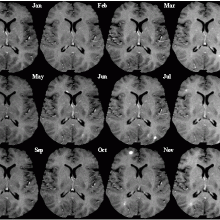
22:50 - What is it like to have MS?
What is it like to have MS?
with Anthony Dean
Our main topic this week is Multiple sclerosis, a debilitating disease which affects more 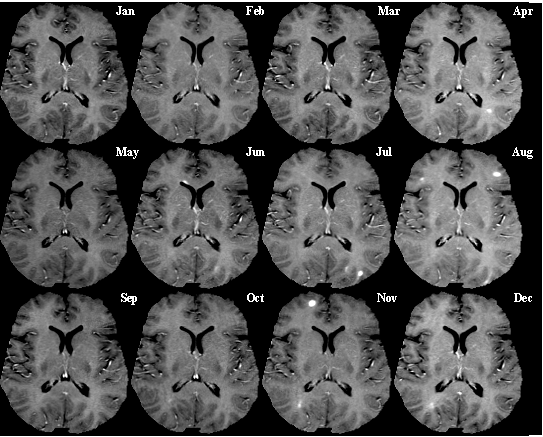 than two million people worldwide. It commonly strikes otherwise healthy individuals in their 20s and 30s, and the symptoms can include loss of sensation and difficulty moving; many sufferers become wheelchair-bound.
than two million people worldwide. It commonly strikes otherwise healthy individuals in their 20s and 30s, and the symptoms can include loss of sensation and difficulty moving; many sufferers become wheelchair-bound.
To find out what it's like to have MS, Hannah Critchlow went to see someone who was diagnosed with the disease 10 years ago...
Anthony - I'm Anthony Dean. I was diagnosed with MS in 2003 after a year of symptoms that were kind of similar and kind of strange, and I didn't really know what they were.
I went to see my GP after having pins and needles in two fingers in my right hand which went away after about a month. Three months later, I had pins and needles down my left arm, and then about 6 months after that, I lost sensation in the right-hand side of my body from the neck down. So, I had no sense of touch. I found it difficult to hold things, to use a knife and fork, work, typing was difficult and that's when I went to the GP who then referred me on to Addenbrookes Hospital (in Cambridge) to be checked over for MS.
Hannah - And that must've been quite terrifying to have experienced this almost paralysis. What happened once you were at Addenbrookes Hospital?
Anthony - I went through a series of tests first - checked my vision, checked my balance, checked my memory, and sensation, touch. Then after that, went back for a lumbar puncture and then after the results of the lumbar puncture, that's when I got my diagnosis.
Hannah - And how long did it take until your final diagnosis?
Anthony - From my first symptom, which would've been in 2002, I was diagnosed in July 2003. So, it wass just about a year from the first time it happened. But the first time it happened, I never told anyone because to me, it was just numbness in my fingers. I slept funny. I might have trapped a nerve, was what I told myself. When it happened the second time, I thought I'd trapped a nerve the second time. When it happened the third time, I thought, this is probably connected and now, it's probably time to go and see someone.
Hannah - And at this point, how was it affecting your life whilst you're waiting for the diagnosis?
Anthony - I was working at the time. It was more of an inconvenience. There was nothing that was stopping me from actually doing anything. At work, I ended up working one-handed. So, I could use my left hand but my right hand really couldn't control a mouse. I ended up typing with one finger on my right hand compared to using the whole of my left hand. And driving a car was not impossible, but there would've been times where looking back now, perhaps I shouldn't have done it because I may not have felt that I had full control over the accelerator pedal. But it wasn't too bad. I was lucky in that sense that I could continue doing everything that I normally did. Perhaps I wasn't playing golf as I used to or playing snooker. But yeah, everything else, I could just about do.
Hannah - And how did you feel after you were diagnosed with MS, all the way back in 2003?
Anthony - At first, to hear a diagnosis like MS, it's a little bit startling. My only experience of MS or anyone with MS had actually been from the TV programme, The West Wing. In the first series of it, it's revealed as the American president has lied to the American public by saying he's had MS and he's been treated. In it, there's lots of question over it, is he capable to still be president? What happens if he has a relapse? It's something which they actually spell out very clearly in the programme, that it's not a condition that will kill you. It's not something that is - it will affect you in certain ways, but it's not a life threatening illness. So in it he basically continues to be president for another 7 years after that point. So, I felt very comfortable on the back of that.
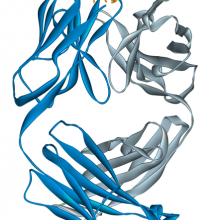
26:57 - Treating MS with Campath
Treating MS with Campath
with Professor Alastair Compston, Cambridge University
What's actually going on in a person's body when they've got Multiple Sclerosis? Chris Smith spoke to Alastair Compston from the Department of Clinical Neuroscience in Cambridge where he specialises in dealing with this disease...
Chris - Tell us a bit then about when someone has multiple sclerosis, what is this disease?
Alastair - Well, Anthony gave a very clear account of the experience for a patient of attacks which come and go, with good long periods in between in which the patient is entirely well.
What he was describing was the patches of damage occurring from time to time in his brain and spinal cord. In those patches, a number of different things are happening. There's inflammation, there is some loss of the myelin sheath which is found around most nerve fibres in the brain and the spinal cord. There's damage to the nerves themselves. There is sometimes some repair and remyelination which we may hear about later, and there's scarring or sclerosis in those patches. So, multiple sclerosis, lots of areas of scarring and the problem has been to sort out what's driving that process, and how those different components fit together.
Chris - What is causing the inflammation?
Alastair - Well, this has been debated for many years and it's only really recently that I think most people would agree that inflammation is the primary process - the one that is driving the disease, and that comes from the circulation, from the lymphoid organs. It's not something which starts in the brain. What triggers it is complex and we'll probably discuss later some of the ideas around the causation of this inflammation, this autoimmunity which most people would not accept drives the disease.
Chris - So, immune system for some reason we don't quite understand moves into the nervous system and begins to attack certain patches of the nervous system, but by no means, all of it all at once.
Alastair - Yes, that's the idea. When that consensus was reached of thinking, then of course, it did offer the possibility of trying out treatments which might stop the immunological, inflammatory process and so, be useful for individuals who had the illness. But those ideas and the drugs which have been used really only started to come into play in the early 1990's. Since then a number of drugs have been licensed and they're used, and really, multiple sclerosis has been a fantastic success story in terms of the menu of drugs which can be thought about and used by comparison with many of the other diseases of the nervous system that we as neurologists deal with on a daily base. So, it has been very successful, but of course, there are still unmet needs and problems yet to be sorted.
Chris - So, the way that you'd chiefly tackle the disease is to try to damp down or turn off the immune response at least temporarily when it tries to flare up in order to stop it damaging the brain or spinal cord, wherever it's damaging at that moment.
Alastair - Well, that's my approach and I think most people would now agree that to tackle the immunological component is a very good way to start, both from theoretical reasons from what we know about the mechanisms of the disease and also empirically, from seeing what actually happens to patients when that approach is taken. So, all of the drugs that a neurologist can now think about using in people with multiple sclerosis are oriented around the immunological component. That's not to say that there aren't other aspects of the mechanism of the disease that we would like to deal with - neuro protection, remyelination and repair that we may hear about - but at the moment, the licensed drugs are addressing the immunological component because we think that is pivotal and driving everything forward.
Chris - Is that what led you to try this fairly radical drug Campath which was invented here in Cambridge which is a very potent way of removing the immune response at least for a period of time in some of your patients like Anthony?
Alastair - Well, when we first thought about using that monoclonal antibody, Cambridge pathology first human Campath-1H, the logic was that, yes, the disease is immunologically driven, but dealing with it once it's started and trying to unpick the events going on within the central nervous system was bound to be difficult. And so, our hypothesis was to ask whether we could go back a step and get outside the nervous system and deal with the process before the cascade of events had really set in.
So, the opportunity arose to do that because Campath is a humanised monoclonal antibody which targets the CD52 antigen which is present on all immune cells, T and B lymphocytes. It could be given by intravenous injection and there was every reason to expect that it would radically remove the immune system from the bloodstream and lymphoid organs, and then subsequently allow a repopulation with new cells, which we hoped would not bring back the old story of multiple sclerosis.
Chris - And is that what you found?
Alastair - It is actually what we found and we had to learn a number of lessons. It's taken us 25 years to get to the European license which was granted on the 17th of September this year. We've learned many lessons along the way, but we've ended up with clear evidence that the efficacy, in other words, the usefulness of the drug is very high. However, as with many treatments in medicine and multiple sclerosis is no exception, there is no free lunch. And so, with the very high efficacy, comes significant risks and hazards, and inconvenience of having to have injections and to attend hospital and to take part in risk monitoring schemes.
Chris - So, just very briefly, in someone who has MS and it was progressing in them, you put them in your Campath trial, what proportion of them are likely to achieve resolution of their disease like this and what sorts of side effects might they expect?
Alastair - Well, not quite and we have to be careful with this word 'progression'. So, multiple sclerosis starts with episodes which come and go, and then later, after some time, usually many years, those episodes dry up, reduce in frequency and are replaced by slow progression. We, in fact began by treating people with progression, with advanced disease who were already very disabled and we learned after a number of years - 7 or 8 years - that this particular drug and all others are not useful in that situation disappointingly. And so, in 1999, we switched to treating the disease very early in people who were threatened by multiple sclerosis but were still relatively well. And it was that switch from treating the disease late to treating the disease early that was the crucial step. And now that we do that, the experience is very good for most patients.
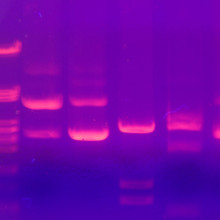
34:18 - What are the risk factors for MS?
What are the risk factors for MS?
with Steve Hauser, University of California
Hannah - So, Campath offers some hope to multiple sclerosis sufferers, but might it be possible to entirely cure the disease in the future for all those that have MS? Steve Hauser is a Neurologist at the University of California in San Francisco and he joins us now. Hi there, Steve.
Steve - Good evening.
Hannah - So, MS can manifest itself either gradually or it can come 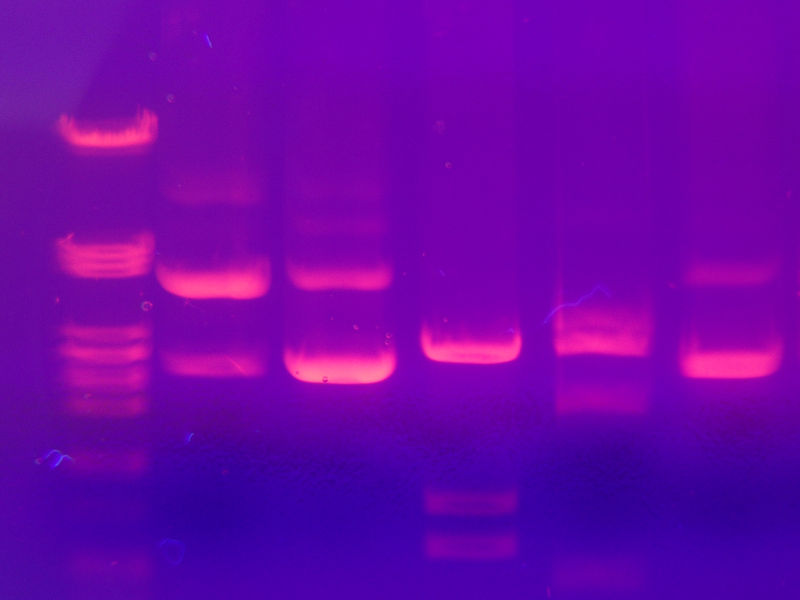 on more suddenly as we heard in Anthony's case, but how does this quite broad spectrum of the way that MS can work, how does this affect treatment and also management?
on more suddenly as we heard in Anthony's case, but how does this quite broad spectrum of the way that MS can work, how does this affect treatment and also management?
Steve - Yes, this is a very important point that you've just made. MS like other chronic autoimmune inflammations, rheumatoid arthritis for example, can be a benign, almost trivial illness in some people and a very aggressive and life-changing illness in others.
So, the first important consideration is that the severity of MS is very broad. The second important point is that the important outcomes can play out, not only over a year or two, but much more often over a decade or two, or longer. Our experience with therapies generally involved just 2 years or at most, 3 years of observation. So, it's an inadequate window to really see the long term outcomes that we all care so much about.
For someone like Anthony who began with numbness in a couple of fingers, we really want to know what the natural course is. We want to be able to predict the future in those individuals so that we can assess whether this will be a serious or a trivial problem. And also, how aggressively we would want to treat.
Hannah - Alastair was talking about the immune system kind of attacking the nervous system. Is that genetics that are involved in this? So, for example, did Anthony have a genetic predisposition to this immune system hyperactivity?
Steve - Well, most likely, he does. But in general, the genetic architecture of multiple sclerosis is quite complex. This is not a simple genetic disease as Huntington's disease is, for example, but is a problem where many different genes, most of which influence somehow the function of the immune system, work together to increase one's risk. However, most of the risk we believe is environmental. So, this is a complex problem in which both genes and environment participate.
Hannah - And what type of environmental factors are involved?
Steve - Well, we don't have a full understanding of those. We do believe that the disease has increased in frequency over the past 100 years and that is certainly environmental and not genetic because our genes don't change enough over just a few generations to account for this. We believe that vitamin D insufficiency, that most people in the Western world have chronically, is part of the story. A healthier, cleaner environment, perhaps with later exposure to the Epstein-Barr virus, might be another part of the story. And then there were some other associations that may not be causal but that are related to one's risk of multiple sclerosis, especially smoking.
Hannah - Thank you very much, Steve. So, that was Steve Hauser from the University of California in San Francisco.

37:21 - Up and running after MS treatment
Up and running after MS treatment
with Anthony Dean
The drug Campath offers hope to those people who have just been diagnosed with early stage MS, but what do patients who've tried the drug actually think? Anthony Dean, who we heard from earlier in the programme was put on the original trials for the drug. He spoke with Hannah Critchlow.
Anthony - Well, when I was diagnosed in the first place, the first question I had was about what treatment was available. I'd done some research online, I'd Googled my symptoms and I kinda had an idea what I might be diagnosed with. And then on the back of it had looked up what would be available. After speaking to the consultant it became obvious there were two options to me. Either take the standard course of beta interferon, which would've been done by an injection, or I was offered to take part in a trial.
My first question was, how successful has the trial been so far? And I was told that  early indicators were that it was proving to be very successful. So, I decided to go ahead with it, in a sense, take the gamble, because I had nothing else to lose. I was invited back, a couple of months later, into hospital for 5 days of an infusion of Campath, alongside steroids.
early indicators were that it was proving to be very successful. So, I decided to go ahead with it, in a sense, take the gamble, because I had nothing else to lose. I was invited back, a couple of months later, into hospital for 5 days of an infusion of Campath, alongside steroids.
Hannah - So, you were diagnosed with MS and then 3 months later, you started this Campath treatment and then that was 1 week duration of the treatment in the hospital?
Anthony - That's right, and that was all the treatment I had in my first year.
Hannah - What consequences were there of this treatment?
Anthony - The treatment itself wasn't too bad. I was in hospital being well looked after. I felt a little bit sick, I think mainly from the steroids more so than the actual treatment itself. On the back of it, though, there is a side effect, known as Campath rash. Essentially, you sort of break out in a reddish, purply kind of rash. But again, other than looking a bit like Barney the dinosaur, there's nothing actually wrong with you. It just looks a bit strange to people you don't know and what you've been doing.
Hannah - Did you regain sensation in the left side of your body?
Anthony - It's not a matter if it will give you back the sensation. Everything that I had had, problems that I'd had in the past had always come back and it's part of the relapsing and remitting form of MS. It comes and then it goes again. So, at the time, I wasn't actually suffering from any problems with MS. So, I'd gone into a hospital healthy and came out healthy. But since that point, I haven't had one symptom of MS.
Hannah - So, how long have you been MS free?
Anthony - That would be 10 years this week.
Hannah - And do you think that your diagnosis and your subsequent treatment has changed your life in a tangible way that you might want to tell the listeners about?
Anthony - I think it would be wrong to say that I've re-evaluated my life and seized the moment. That's not the kind of person I am.
One of the things on the back of it is that I started to take my fitness a bit more seriously - I took up running about 5 years ago, and ran half marathons, which is good fun. Last month, in fact, I did three half marathons in a month in order to raise money for the Multiple Sclerosis Society. So, so far, I've raised about £2,500.
41:16 - Alternative drugs for MS
Alternative drugs for MS
with Luke Lairson, Scripps Researchers Institute in California
MS has a pattern of remission and relapse; this is because the disease flares up periodically, causing damage to the nervous system, which then slowly repairs itself. But it doesn't completely fix the damage that's done, and this leads to progressive worsening of the symptoms.
Chris Smith spoke to Luke Lairson from the Scripps Research Institute in California where he's found some drugs that might be able to stop and even reverse this.
Chris - So, tell us about the approach you've taken.
Luke - So, we sort of heard MS is a disease which is associated with primary demyelination of axons which leads to neural dysfunction and as you've just described, the disease is characterised by relapsing and remitting phases, and ultimately, we get progression of the disease. And what's known is that during the remitting phases of disease, there's a population of stem cell derived cells termed oligodendrocyte precursor cells which are recruited to sites of injury and subsequently, differentiate to a mature cell that can remyelinate the damaged axon.
Chris - So, just to translate this slightly, you've got these stem cells sitting in the nervous system that are capable of giving rise to the same cells that make the myelin that gets attacked in the disease and which goes away during the inflammation, and that those stem cells can potentially give new cells to remyelinate and repair damage.
Luke - Exactly, right. And so, what's known from looking at the chronic lesions of MS patients, of the histopathology of those lesions is that, during the progressive phases of the disease, there's still an abundant presence of this precursor cell. However, they're found to be in this intermediate halted state of differentiation so they don't fully mature to a cell that can repair the damaged axon.
Chris - So, it's a bit like you're in the garage and you've got a car that needs repairing and there's all the spare parts there, but they're not just being put onto the vehicle.
Luke - Right, exactly. So, what people have sort of proposed for the last decade is that an effective complimentary approach to the treatment of MS in conjunction with immunosuppresor strategies as we've heard about would be to identify agents that can directly induce the differentiation of those precursor cells which are in this halted state of differentiation.
Chris - So, how did you approach that? How did you do it?
Luke - So, the approach we've taken which people proposed to do is, we used an unbiased high throughput microscopy cell based approach. We took primary cells from rat optic nerve and developed assay conditions where we could mimic that halted differentiation and then screen against that 100,000 compounds to look for potential drug candidates that induce the differentiation to a myelin basic protein positive mature oligodendrocyte fate.
Chris - Basically, you grow some cells in the dish that could make myelin if they were so inclined. You then chuck on up to 100,000 different chemicals. So, in other words, you're doing this many, many times to see if any of those chemicals make those cells go back into a state where they want to make myelin and then you can go, "Aha! That might be a potential drug to repair lesions in MS."
Luke - Exactly, right. And so from this, we actually identified a number of compounds. Several of which had not been characterised before which belong to a class of so-called neurotransmitter receptor modulating agents, which effectively induced OPC differentiation in vitro. And so, we decided to fast track the analysis of these compounds because a number of them are actually approved drugs which are known to be centrally acting, i.e. they can get into the spinal cord or the brain. And so, they have the potential for rapid progression to clinical development.
Chris - What drugs did you find?
Luke - The most efficacious compound we identified was an approved drug called benztropine which is currently used for the treatment of Parkinson's disease. Using pharmacology, we've determined that the activity of this compound is dependent on antagonism of a specific neurotransmitter receptor, the muscarinic receptor.
Chris - In other words, by blocking up that receptor, it makes the cells become active.
Luke - Right and that's consistent with the finding that was reported by an Italian group last year where they showed that activation of that receptor actually induces the proliferation and inhibits differentiation of this precursor cell.
Chris - And have you got any evidence at least in animals if nothing else that if you give this agent that it can remedy the damage done in MS?
Luke - Once we identified this compound and realised that was an FDA approved drug that would work in the central nervous system, we decided to evaluate it in vitro and in vivo using mouse models. So in vitro, we showed that we could in fact remyelinate existing axons in a co-culture experiment. And then we looked at the drug's activity in two mouse models of demyelination and remyelination. The first one is a relapsing remitting model, inflammatory model of MS known as the PLP-induced EAE model. We found that benztropine had a dramatic effect at decreasing the clinical severity in this disease. With efficacy, that was comparable to or better than existing standard care immunosuppressive drugs. We then went on to look at it in an additional model which is a non-inflammatory toxicity model known as a (24:56) model. And again, we found that the drug had a dramatic effect on enhancing the rate of remyelination in vivo in MS.
Chris - It must be reason to be positive then, Luke. Thank you.
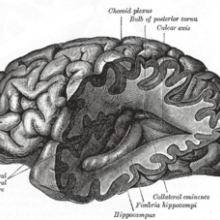
Is M.S. similar to dementia?
Alastair - The nervous system has got a limited number of ways in which it can complain as it were and progression is one of them. So, many neurological diseases get worse over time sadly. That's why they have a poor reputation. There is a view now and it's quite a popular view that diseases like Alzheimer's disease, Parkinson's disease that we were just hearing about are also inflammatory diseases. I've been arguing earlier in the programme that multiple sclerosis is primarily an inflammatory disease. The crucial point here, Hannah though, is whether the inflammation that happens in the Alzheimer's disease, Parkinson's disease is a reaction to the damage that has already occurred, something which amplifies the problem, or whether it is the primary driver. And multiple sclerosis in my view is a disease that is driven by inflammatory processes, not something in which these are just a reaction to another primary event.
Hannah - And we heard, quite a few months ago now, we had Belinda Lennox from Oxford on air and she was talking about some findings where the immune system was actually attacking proteins in the brain, and that was giving rise to psychosis as well. So, the immune system could be involved in a lot of different disorders of the brain.
Alastair - So, neuroimmunology, the discipline of studying immunology in the brain is an emerging discipline. One of the really exciting discoveries is that a number of diseases that previously were completely mysterious are in fact driven by antibodies or immunological processes directed against receptors and ion channels in the brain. A whole new class of diseases has been discovered of which psychosis is one.

How effective is Campath?
Alastair - He's asking a very sensible and a reasonable question which is that, it's all very well for medical scientists and doctors to promote particular treatments, but do these really work in the long term? Is the immunological hypothesis correct? I think that the problem is that it hasn't really been tested until recently. By which, I mean that patients had not been treated at the right stage with drugs that really do the job. Now in my view, but I would say this, Campath is a good way of testing the hypothesis. You've heard from Anthony Dean that 10 years on, he is normal, running marathons and so on, and that's great. That's roughly the experience that we've had with most of the patients who we've treated. We've followed them or we've looked after them now for up to 14 years and so far, we are very encouraged as are they by the lack of any progress. Indeed, many of them are now better than they were when we began. So, I think if you do the right experiment, if I can put it in those slightly hard terms, of using a drug that really works at the right stage of the illness, then you can see whether this is going to have a long term effect and so far, so good.
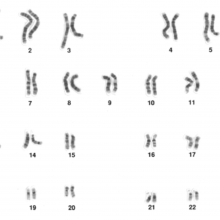
Can you inherit MS genetically?
Steve - We really do not understand why your husband developed multiple sclerosis. The wonderful progress that Professor Compston discussed earlier in this session really gives us hope that in the future, we might understand MS in a simpler way. We know that genetics and our inheritance does predispose some of us more than others to developing MS. But MS is not a purely or even a predominantly hereditary disease.
Alastair - Well, only really to reiterate what Steve has said that knowing about the genetics of multiple sclerosis helps us as medical scientists to understand the nature of the problem, but it's not a cause for worry for individual people. Because the risks to close relatives are very, very low, except in the one situation of an identical twin. The genetics is about understanding what's going on. Not about counselling or other applications.
Hannah - Say, for example, my grandma had multiple sclerosis, what's the chance of me then developing multiple sclerosis compared to Chris whose grandparent didn't?
Alastair - Well, I'm sorry to hear about your granny, Hannah, but it does mean that you are very slightly more likely than the average person to develop the illness. Shall we say, 1 in 500 people will develop multiple sclerosis and if you've got a first degree relative who has or had the illness then your individual risk is slightly increased. But it is still very low and we have figures for the granddaughter of a woman who had the illness in life and you can be reassured that this risk is down at under 1%.

Can stem cells repair nerve damage?
Chris - Danny has got in touch from Facebook and he's saying, is it possible to regrow the myelin sheath around axons with stem cells? So, in other words, the stem cells that you're finding how to re-activate, have you got evidence that you can in a human remyelinate damaged nerves?
Luke - With our drug, we don't have the in vivo human data, of course, yet. We'll need clinical evaluation for that, but there is in vitro and in vivo data both in rodent and man that these stem cells are capable of repairing damaged axons and remyelinating. So yes, there is data for that.
Hannah - Thanks ever so much, Luke. Alastair, I believe that you've been working with someone who's also working on regrowing myelin sheath.
Alastair - Well, we read Luke's work recently in the journal Nature with great interest and it's really fantastic that there are now agents being identified, albeit still in animal models, which have the potential to enhance remyelination. So, as medical scientists, neurologists, we're very optimistic that molecules, drugs if you like, will become available which can help the body to repair itself to improve, as we say, endogenous remyelination. The anticholinergic drug that Luke discussed is one such, and there are others. In our own university, here in Cambridge, Robin Franklin has identified some molecules which are in the same general family of improving endogenous remyelination. I'm sure that these will gain interaction and make it to licenses in due course, but that will be a slow process.
54:46 - Bilingual babies brain development?
Bilingual babies brain development?
Hannah - This week, we climb the tower of Babel to get our brains around this.
Ester - Hello, there. My name is (Esther) and I am calling from Madrid. I came back to Madrid to take care of my niece (Alyana). She's just 1 year old. Since then, I haven't spoken to her solely in English. So, my question is, is it okay if I speak to her in English or I am delaying her learning? Thank you so much for your help.
Hannah - So, is it good to raise your baby bilingual? We turn to developmental linguist, Professor Antonella Sorace from Edinburgh University.
Antonella - The short answer is, yes, raising a baby to be bilingual certainly affects his brain for the better.
Hannah - Aha! But I'm sure I've heard raising a baby with two languages is actually bad for development, that they won't do quite so well at school?
Antonella - What is coming out of research is a completely different picture. Bilingual children tend to be better for example at understanding how language works in general. And so, they pick up other languages more easily. They tend to learn to read earlier than monolingual children. They find it easier to appreciate that other people can have different perspectives and different points of view. Bilingual children also tend to be better at focusing attention and monitoring their own behaviour.
Hannah - So, there are long term benefits of being brought up bilingual, including as published this week in the American Academy Neurology, delayed onset of old age dementia. So, the bottom line for Esther...
Antonella - I would say, Esther, go for it. Try to speak English to your baby and to create many opportunities as possible for your child to hear English and to get engaged with English.









Comments
Add a comment